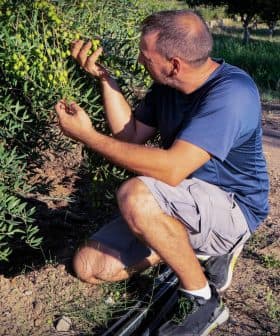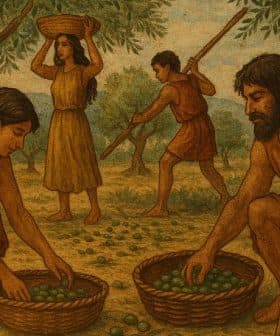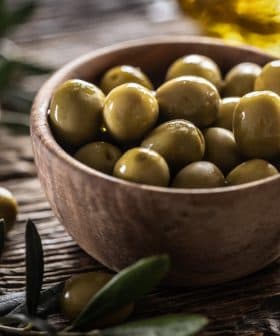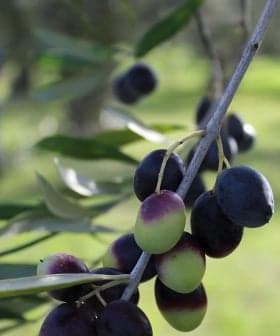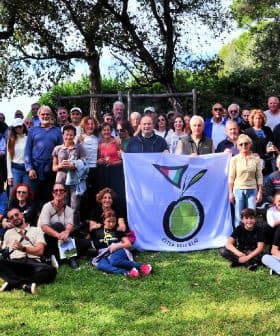Italian Agriculture Fell in 2020, Olive Oil Sector Hit Hardest, Report Finds
In 2020, the production value of the Italian agriculture sector decreased by 3.2 percent, with employment declining by 2.3 percent and added value products market dropping by six percent, according to Istat. Despite challenges faced due to the Covid-19 pandemic, Italy remains a leading producer of agricultural products and opportunities for growth in the sector are present within the Recovery Plan, focusing on ecological transition and biodiversity protection.
The production value of the Italian agriculture sector fell to €59.6 billion in 2020, a 3.2 percent decrease compared to the previous year, new data from Italy’s National Institute for Statistics (Istat) show.
Employment in the sector also declined by 2.3 percent, while the added value products market dropped by six percent. Istat published these latest findings in its annual report on agriculture in Italy.
However, not all farming sectors suffered productivity losses last year. The production value of fruits, cereals and milk grew mildly, while olive oil production fell by 14.5 percent, more than any other sector.
The impacts of the Covid-19 pandemic have also been felt on agricultural-related issues, with support services from farming falling by 4.1 percent and floriculture decreasing by 8.4 percent.
See Also:Italian Producers Achieve Record Success at World CompetitionDespite these figures, Italy remains the third largest European country in terms of the value of agricultural production and the leading producer of added value agricultural products.
Given the extraordinary events of 2020, these data do not surprise observers and experts.
“Almost one company out of five, 18 percent, suffered the demand reduction due to the collapse of tourism and the expenses cut by bars, restaurants and pizzerias forced to close for months,” Ettore Prandini, president of the prominent farmers association Coldiretti, told Olive Oil Times.
A similar impact has been felt by farmhouses, the revenue of which also fell by 60.8 percent during the pandemic.
The Istat report shows that 2020 was a challenging year for the Italian olive oil sector, with a reduction in volumes and value, which fell by 22.4 percent.
The drop hit the southern regions the most, including Puglia (-31.7 percent), Campania (-22.6 percent) and Calabria (-21.6 percent). Given the high volumes traditionally produced in these regions, specifically in Puglia, the growing volumes experienced farther north, including in Tuscany (+28.6 percent), Umbria (+14.7 percent) and Veneto (+19 percent), did not counterbalance the significant losses farther south.
The wine sector did not fare much better, according to the report, with a nationwide drop in terms of production. Some of the most relevant wine-producing regions, including Tuscany, Umbria, Liguria, Sicily and Friuli Venezia-Giulia, experienced decreases between eight and 12 percent.
The collapse of demand by the Horeca (hospitality) sector has also brought down the wine market prices, mainly in the southern regions. As a whole, wine production in Italy in 2020 has fallen by 3.4 percent.
Still, according to Coldiretti, new opportunities for the whole sector are present within the Recovery Plan that Italy will push ahead in the coming years within the E.U. recovery framework.
The plan includes one million jobs that Prandini believes could be created by focusing on an ecological transition as the center of the development of the agribusinesses, the extra virgin olive oil sector and the biofuels sector.
“With more than four out of 10 Italians asking for direct intervention from the government for the protection of biodiversity… our strategy must be to focus on biodiversity and quality of our products,” Prandini said.
“A scenario that [must] put the extra virgin olive oil market at the center of the scene, given the world primacy of Made in Italy high-quality extra virgin olive oils and the largest number of protected specialties recognized in Europe,” he added.
With 43 Protected Designations of Origin and four Protected Geographical Indicators, Prandini argued that Italy is the most biodiverse olive-growing country in the world. Italy grows 533 different types of olives, “as opposed to the 70 varieties accounted for in Spain, where mass production is sixfold,” he added.
While waiting to deploy the reforms that will come with the Recovery Plan, the Italian Minister for Agriculture, Stefano Patuanelli, has imposed new rules for olive oil and wine sector public aid.
More specifically, in the areas impacted by the spread of Xylella fastidiosa, the new rules ask farmers to re-plant their olive trees in the dedicated areas within a maximum time of four years after the removal intervention.
New specific regulations are also being introduced for those farmers hit by Xylella. They will ask for continuous public support during the time needed for their crops to re-enter production. The minister also re-calibrated the rules governing promotional activities of the wine sector and deferred the terms of a series of pending payments for wine producers.
In a press release, the Italian Confederation of Agriculture (CIA) emphasized how the Istat data show the need for new public policies that put agriculture at their center.
“Thanks to the Recovery Plan and the Industry 4.0 strategic plan, we expect measures to enhance agribusinesses competitiveness and support risk management, given the climatic events like the late frost that have become cyclical and structural.” the CIA said.
The confederation also asked the government to push for innovation in the sector “through the adoption of blockchain solutions, modernization of the infrastructure, renewal of the machinery, better logistics infrastructure and the no longer postponing the digitalization of bureaucracy.”
“Italian agriculture is the main resource to kickstart a new season of economic and job development in the country,” Prandini said. “To this end, we have to support all companies in the processes of innovating and adopting sustainable models to curtail bureaucracy and simplify services to help the transition towards a circular economy model destined to bring more efficiency in the use of the resources.”


